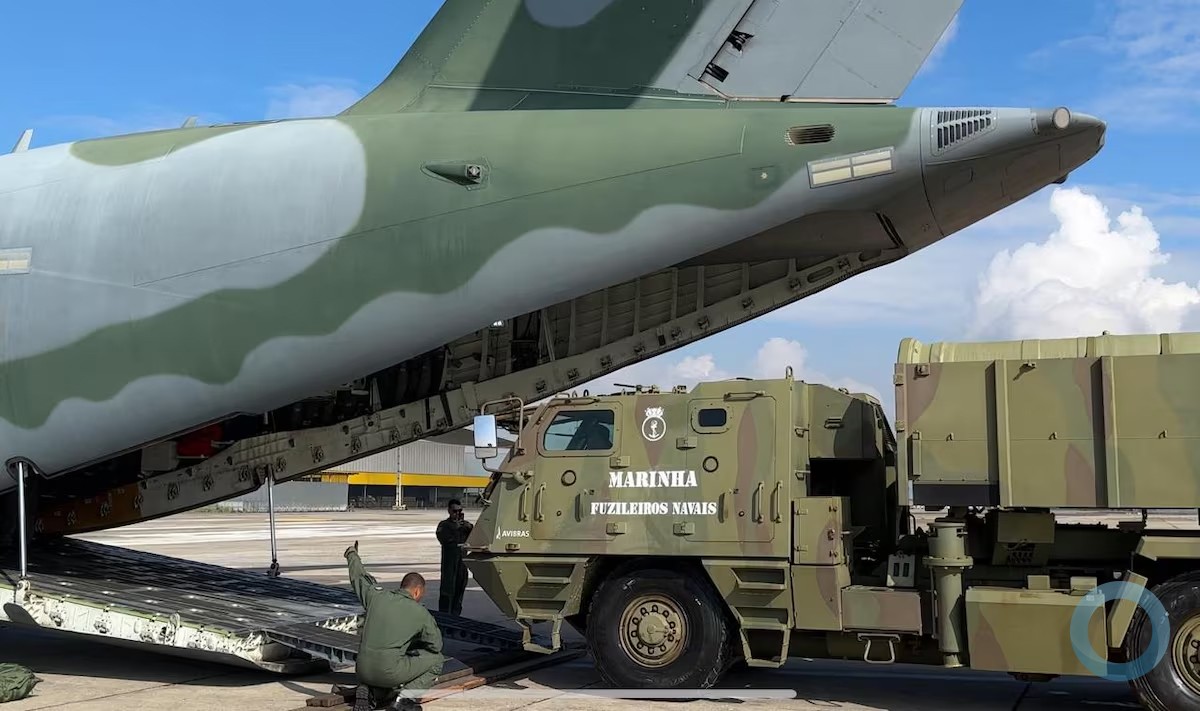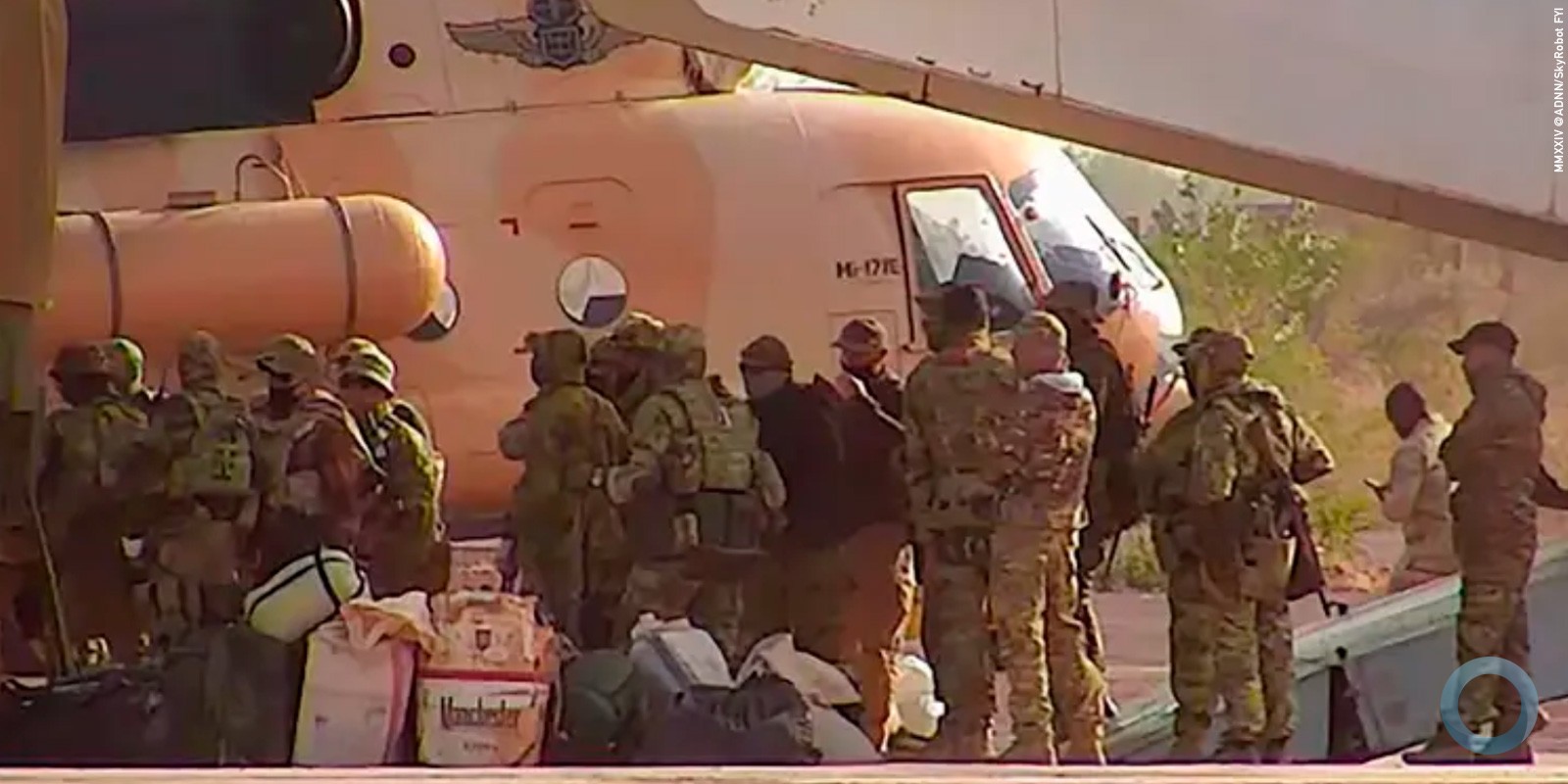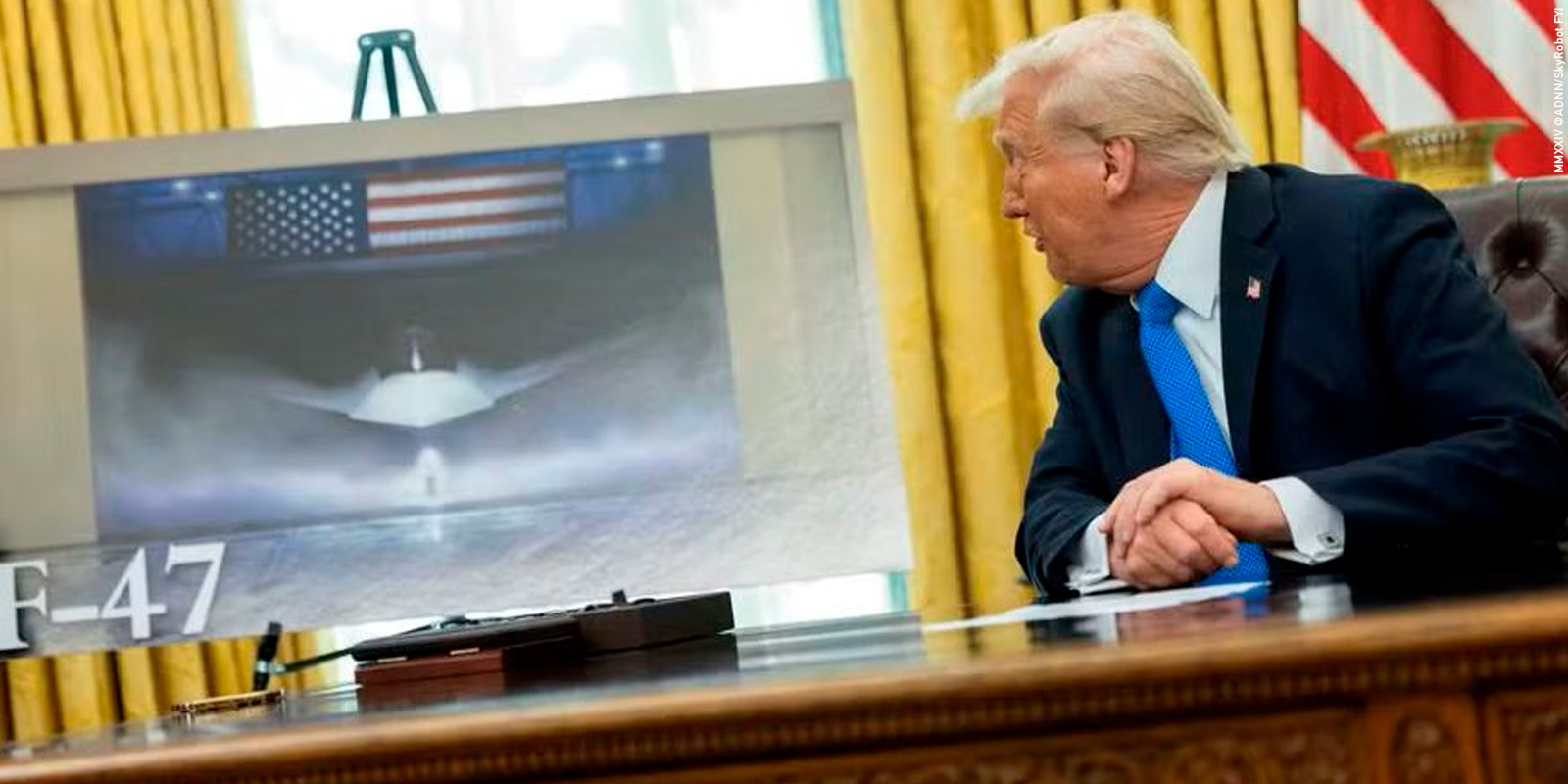|
Nota DefesaNet
Analisaremos as propostas apresentadas pelo Secretário de Defesa Americano Chuck Hagel futuramente. O Editor |
Statement on Strategic Choices and Management Review
As Delivered by Secretary of Defense Chuck Hagel, Pentagon Press Briefing Room, Wednesday, July 31, 2013
Good afternoon.
I want to make some remarks about our Strategic Choices Management Review, which I directed about four months ago, and Sandy Winnefeld, who as you all know is the Vice Chairman of the Joint Chiefs, is here and will add his comments, as well.
The Chairman is in Arizona, where he has just recently welcomed his eighth grandchild, so he's doing important business, as he is taking care of twin boys who are 2 years old. So he is testing his Chairmanship and his ability in that regard. So that's why General Dempsey is not with us today.
So I'll begin, and then Admiral Winnefeld will add his thoughts. And we'll take some questions. And if you all want to go deep, deep down into what I'm going to talk about, then we have some of our budget and financial analysts here to go as deep as you want to go on what I'm going to talk about here in the next few minutes. So, thank you for giving me some time today.
Earlier today, I briefed key congressional committee leaders on the findings of DoD's Strategic Choices Management Review. And this afternoon, as I've said, I want to talk about these findings and clarify the major options and the difficult choices that we have ahead.
I directed the Strategic Choices and Management Review four months ago to help ensure the Department of Defense is prepared in the face of unprecedented budget uncertainty. Although DoD strongly supports the President's Fiscal Year 2014 request and long-term budget plan for the entire federal government, the deep and abrupt spending cuts under sequestration that began on March 1st of this year, are, as you all know, the law of the land. Sequestration will continue in the absence of an agreement that replaces the Budget Control Act.
The purpose of the Strategic Choices and Management Review, which was led by the Deputy Secretary of Defense, Ash Carter, with the full participation of General Dempsey and Admiral Winnefeld, the Service Secretaries and the Service Chiefs, was to understand the impact of further budget reductions on the Department and develop options to deal with these additional cuts. It had three specific objectives:
- Help DoD prepare for how to deal with sequestration if it continues in Fiscal Year 2014;
- Inform the fiscal guidance given to the military services for their F.Y. 2015 through 2019 budget plans;
- And, third, anchor the upcoming Quadrennial Defense Review, which will assess our defense strategy in light of new fiscal realities and the many threats and complexities and uncertainties of this new century.
The Strategic Choices and Management Review did not produce a detailed budget blueprint. That was not the purpose of the review. It generated a menu of options, not a set of decisions. These options were built around the potential budget scenarios:
- First, the President's F.Y. 2014 budget, which incorporates the carefully calibrated and largely back-loaded $150 billion reduction in defense spending over the next 10 years.
- Second, the Budget Control Act sequester-level caps, which would cut another $52 billion from defense spending in Fiscal Year 2014, with $500 billion in reductions for the DoD over the next 10 years.
- And third, an “in-between scenario” that would reduce defense spending by about $250 billion over the next 10 years, but would be largely back- loaded.
It's important to remember that all these cuts are in addition to the $487 billion reduction in defense spending over the next decade required by the initial caps in the Budget Control Act of 2011, which DoD is currently implementing. If sequester-level cuts persist, DoD would experience nearly $1 trillion in defense spending reductions over the next ten years.
To help DoD balance strategic ends, ways and means under these budget scenarios, the Strategic Choices and Management Review scrutinized every aspect of DoD's budget, including contingency planning, business practices, force structure, pay and benefits, acquisition practices, and modernization portfolios. Everything was on the table.
As I discussed last week at the VFW Convention in Louisville, four principles helped guide this review:
- First, prioritizing DoD's missions and capabilities around our core responsibility of defending our country;
- Second, maximizing the military's combat power by looking to reduce every other category of spending first;
- Third, preserving and strengthening military readiness;
- And, fourth, honoring the service and sacrifice of DoD's people and their families.
Those principles, and a rigorous review process, resulted in packages of options that included management efficiencies and overhead reductions, compensation reform, and changes to force structure and modernization plans.
Allow me to share with you some of the options the review identified in each of the areas I've just mentioned.
First, management efficiencies and overhead reductions. A tenet of the review was what we need to focus on is maximizing savings from reducing DoD's overhead administrative costs and other institutional expenses.
For several years, DoD has been paring back overhead. About $150 billion in five-year efficiency reductions were proposed by Secretary Gates. An additional $60 billion in savings were identified by Secretary Panetta. And I submitted a $34 billion savings package in our latest budget. DOD is continuing to implement these efficiency campaigns, but despite much progress, as well as good efforts and intentions, not every proposal has generated the savings we expected or gained the support of Congress – most notably, our request for a Base Realignment and Closure round.
The review showed that DoD will have to do more in this area, much more, even though it is getting more difficult to find these cuts, and it can take years for significant savings to be realized. After considering the results of the review, I determined that it is possible and prudent to begin implementing a new package of efficiency reforms now – ones that should be pursued regardless of fiscal circumstances.
Some of these management efficiencies and overhead reductions include:
- Reducing the Department's major headquarters budgets by 20 percent, beginning with the Office of the Secretary of Defense, the Joint Staff, Service Headquarters and Secretariats, Combatant Commands, and defense agencies and field activities. Although the 20 percent cut applies to budget dollars, organizations will strive for a goal of 20 percent reductions in government civilians and military personnel.
- Reducing the number of direct reports to the Secretary of Defense by further consolidating functions within OSD, as well as eliminating positions and;
- Reducing intelligence analysis and production at combatant command intelligence and operation centers, which will also foster closer integration and reduce duplication across defense enterprises.
These management reforms, consolidations, personnel cuts, and spending reductions will reduce the Department's overhead and operating costs by some $10 billion over the next five years and almost $40 billion over the next decade. They will make the Department more agile and more versatile.
Past efficiency campaigns have shown that implementation can be very challenging, so effective follow-through is critical, if savings targets are to be realized. This is especially true of OSD reductions. I've asked Deputy Secretary Carter to identify someone from outside DoD who is deeply knowledgeable about the defense enterprise and eminently qualified to direct implementation of the OSD reductions and report to the Deputy Secretary.
In addition to the measures I've described, the review identified additional consolidations and mission reductions that could be required, if sequester-level caps are imposed over the long term. These measures include consolidations of regional combatant commands, defense agency mission cuts, and further IT consolidation.
These changes would be far-reaching and require further analysis and consideration. Though defense bureaucracies are often derided, the fact is that these offices perform functions needed to manage, administer, and support a military of our size, complexity, and global reach.
Even over the course of a decade, the cumulative savings of the most aggressive efficiency options identified by the review are $60 billion. That's a small fraction of what is needed under sequester- level cuts. We will have to look elsewhere for more savings.
The review also confirmed that no serious attempt to achieve significant savings can avoid compensation cuts, which consume roughly half of the DoD budget. If left unchecked, pay and benefits will continue to eat into our readiness and modernization. That could result in a far less capable force that is well-compensated, but poorly trained and poorly equipped.
Any discussion of compensation should acknowledge the following:
- No one in uniform is overpaid for what they do for this country;
- People are DoD's most important asset; and we must sustain compensation packages that recruit and retain the finest military in the world.
- The significant military pay and benefit increases over the last decade reflected the need to sustain a force under considerable stress, especially the Army and Marines, during the height of the Iraq and Afghan campaigns.
- One post-9/11 war is over, and the second, our nation's longest war, is coming to an end.
- Overall, personnel costs have risen dramatically, some 40 percent above inflation since 2001. The Department cannot afford to sustain this growth.
Reflecting these realities, the President's Fiscal Year 2014 budget included a package of modest compensation-related reforms that have the strong support of our uniform leadership. Congress has signaled its opposition to some of these proposals, including modest increases in TRICARE fees for working-age retirees. But given our current fiscal situation, DoD has no choice but to consider compensation changes of greater magnitude for military and civilian personnel.
The review developed compensation savings options that we believe would continue to allow the military to recruit and retain the high-quality personnel we will need. If we were to pursue these options, we would need Congress's partnership to implement many of them. Examples include:
- Changing military health care for retirement — for retirees to increase use of private-sector insurance when available;
- Changing how the basic allowance for housing is calculated, so that individuals are asked to pay a little more of their own housing costs;
- Reducing the overseas cost-of-living adjustments; and
- Continuing to limit military and civilian pay increases.
Many will object to these ideas, and I want to be clear that we are not announcing any compensation changes today. Instead, I've asked Chairman Dempsey to lead an effort with the Service Chiefs and the Senior Enlisted Advisers to develop a package of compensation proposals that meet savings targets identified in the review – almost $50 billion over the next decade – and still enabled us to retain and recruit the high-quality force. We would begin implementing this package in the Fiscal Year 2015 budget. Senior OSD staff will lead a similar review for civilian pay and benefits.
The review also identified more sweeping changes to meet sequester-level targets, such as eliminating civilian pensions for retired military personnel serving in civilian government service, ending subsidies for defense commissaries, and restricting the availability of unemployment benefits. This package would yield savings of almost $100 billion over the next decade, but would have a significant impact on our service members and our workforce. But a sequester-level scenario would compel us to consider these changes, because there would be no realistic alternative that did not pose unacceptable risks to national security.
The efficiencies in compensation reforms identified in the review – even the most aggressive changes – still leave DoD some $350 billion to $400 billion short of the $500 billion in cuts required by sequestration over the next ten years. The review had to take a hard look at changes to our force structure and modernization plans.
The President's Defense Strategic Guidance anchored this effort. The goal was to find savings that best preserve the tenets of the President's strategy, such as strategic deterrence, homeland defense, and the rebalance to the Asia Pacific. The review concluded we should not take reductions proportionately across the military services. Instead, the options we examined were informed by strategy, and they will guide the services as they build two sets of budgets for F.Y. 2015 through 2019, one at the President's budget level and one at sequester-level caps.
While we want to preserve flexibility for each military service to develop the best force possible, given reduced resources, the review identified areas where we have excess capacity to meet current and anticipated future needs. In particular, the analysis concluded that we can strategically reduce the size of our ground and tactical air forces – even beyond the current drawdown.
I've not made any program or force structure decisions, and more analysis will be required before the decisions are made. But with the end of the war in Iraq, the drawdown in Afghanistan, and a changing requirement to conduct protracted large-scale counterinsurgency operations, it makes sense to take another look at the Army's force structure – which is currently planned to reach 490,000 in the active component and 555,000 in the reserves.
One option the review examined found that we could still execute the priority missions determined by our defense strategy, while reducing Army end strength to between 420,000 and 450,000 in the active component and between 490,000 and 530,000 in the Army Reserves. Similarly, the Air Force could reduce tactical aircraft squadrons – potentially as many as five – and cut the size of the C-130 fleet with minimal risk.
In the months ahead, I will work closely with Chairman Dempsey and each of the Service Chiefs to reach agreement on the proper size of our armed forces, taking into account real-world needs in a dangerous world.
A modest reduction in force structure, when combined with management efficiencies and compensation reforms, would enable us to meet the $150 billion in savings required by the President's budget proposal while still defending the country and fulfilling our global responsibilities. We can sustain our current defense strategy under the President's budget request.
Significant reductions beyond the President's plan would require many more dramatic cuts to force structure. The review showed that the “in-between” budget scenario we evaluated would “bend” our defense strategy in important ways, and sequester-level cuts would “break” some parts of the strategy, no matter how the cuts were made. Under sequester-level cuts, our military options and flexibility will be severely constrained.
Given that reality, the review examined two strategic approaches to reducing force structure and modernization that will inform planning for sequester-level cuts. The basic tradeoff is between capacity – measured in the number of Army brigades, Navy ships, Air Force squadrons, and Marine battalions – and capability – our ability to modernize weapons systems and to maintain our military's technological edge.
In the first approach, we would trade away size for high-end capability. This would further shrink the active Army to between 380,000 to 450,000 troops, reduce the number of carrier strike groups from 11 to 8 or 9, draw down the Marine Corps from 182,000 to between 150,000 and 175,000, and retire older Air Force bombers. We would protect investments to counter anti-access and area-denial threats, such as the long-range strike family of systems, submarine cruise missile upgrades, and the Joint Strike Fighter, and we would continue to make cyber capabilities and special operations forces a high priority.
This strategic choice would result in a force that would be technologically dominant, but would be much smaller and able to go fewer places and do fewer things, especially if crisis occurred at the same time in different regions of the world.
The second approach would trade away high-end capability for size. We would look to sustain our capacity for regional power projection and presence by making more limited cuts to ground forces, ships, and aircraft. But we would cancel or curtail many modernization programs, slow the growth of cyber enhancements, and reduce special operations forces.
Cuts on this scale would, in effect, be a decade-long modernization holiday. The military could find its equipment and weapons systems – many of which are already near the end of their service lives – less effective against more technologically advanced adversaries. We also have to consider how massive cuts to procurement and research and development funding would impact the viability of America's private-sector industrial base.
These two approaches illustrate the difficult tradeoffs and strategic choices that would face the Department in a scenario where sequester-level cuts continue. Going forward in the months ahead, DoD – and ultimately the President – will decide on a strategic course that best preserves our ability to defend our national security interests under this very daunting budget scenario.
The balance we strike between capability, capacity, and readiness will determine the composition and the size of the force for years to come. We could, in the end, make decisions that result in a very different force from the options I've described here today. Our goal is to be able to give the President informed recommendations, not to prejudge outcomes. Regardless, the decision-making process will benefit from the insights of this review provided.
In closing, one of the most striking conclusions of the Strategic Choices and Management Review is that if DoD combines all the reductions I've described, including significant cuts to the military's size and capability – the savings fall well short of meeting sequester-level cuts, particularly during the first five years of these steep, decade-long reductions.
The reality is that cuts to overhead, compensation, and forces generate savings slowly. With dramatic reductions in each area, we do reach sequester-level savings, but only toward the end of a 10-year timeframe. Every scenario of the review examined showed shortfalls in the early years of $30 billion to $35 billion.
These shortfalls will be even larger if Congress is unwilling to enact changes to compensation or adopt other management reforms and infrastructure cuts we've proposed in our Fiscal Year 2014 budget. Opposition to these proposals must be engaged and overcome, or we will be forced to take even more draconian steps in the future.
A lot has been said about the impact of sequestration. Before this review, like many Americans, I wondered why a 10 percent budget cut was, in fact, so destructive. Families and businesses trim their costs by similar projections. But this analysis showed in the starkest terms how a 10 percent defense spending reduction causes the reality in a much higher reduction in military readiness and capability. Unlike the private sector, the federal government, and the Defense Department in particular – simply does not have the option of quickly shutting down excess facilities, eliminating entire organizations and operations, or shutting massive numbers of employees – at least not in a responsible, moral, and legal way.
The fact is that half of our budget – including areas like compensation, where we need to achieve savings – are essentially off- limits for quick reductions. Given that reality, the only way to implement an additional, abrupt 10 percent reduction in the defense budget is to make senseless, non-strategic cuts that damage military readiness, disrupt operations, and erode our technological edge. We have already seen some of the significant effects of the $37 billion reduction occurring in this Fiscal Year – including halting all flying for some Air Force squadrons, canceling ship deployments, ending Army Combat Training Center rotations for brigades not deploying to Afghanistan, and imposing furloughs for 650,000 DoD civilians.
In Fiscal Year 2014, this damage will continue if sequestration persists. DoD is now developing a contingency plan to accommodate the $52 billion sequester-level reduction in Fiscal Year 2014, which I outlined in a letter this month to Senate Armed Services Committee Chairman Levin and Ranking Member Inhofe. Congress will need to help us manage these deep and abrupt reductions responsibly and efficiently.
The bold management reforms, compensation changes, and force structure reductions identified by the Strategic Choices and Management Review can help reduce the damage that would be caused by the persistence of sequestration in Fiscal Year 2014, but they won't come close to avoiding it altogether.
The review demonstrated that making cuts strategically is only possible if they are “backloaded.” While no agency welcomes additional budget cuts, a scenario where we have additional time to implement reductions – such as in the President's budget – would be far preferable to the deep cuts of sequestration. If these abrupt cuts remain, we risk fielding a force that over the next few years is unprepared due to a lack of training, maintenance, and the latest equipment.
And as I mentioned last week at the VFW Convention, a top priority in future-year budget plans is to build a ready force, even if that requires future reductions in force structure. No matter the size of our budget, we have a responsibility to defend the country and America's vital interests around the world. That means crafting the strongest military possible under whatever level of resources we are providing.
DoD has a responsibility to give America's elected leaders and the American people a clear-eyed assessment of what our military can and cannot do in the event of a major confrontation or a crisis after several years of sequester-level cuts. In the months ahead, we will continue to provide our most honest and best assessment. And the inescapable conclusion is that letting sequester-level cuts persist would be a huge strategic miscalculation that would not be in our country's best interests. While I've focused today on the impact to DoD, sequester-level cuts would equally harm other missions across the government to support a strong economy, which, as is always the case, supports a strong national defense. And this will be important, because providing that support through that economy to our servicemembers, veterans and their families is part of our overall readiness and capabilities and capacity responsibilities. DoD depends on a strong education system to maintain a pool of qualified recruits. We rely on domestic infrastructure that surrounds our bases and installations. And we count on scientific breakthroughs funded by research and development grants and a strong manufacturing base to maintain our decisive technological edge. All of these areas are threatened by sequestration.
It is the responsibility of our nation's leaders to work together to replace the mindless and irresponsible policy of sequestration. It is unworthy of the service and sacrifice of our nation's men and women in uniform and their families. And even as we confront tough fiscal realities, our decisions must always be worthy of the sacrifices we ask America's sons and daughters to make for our country.































